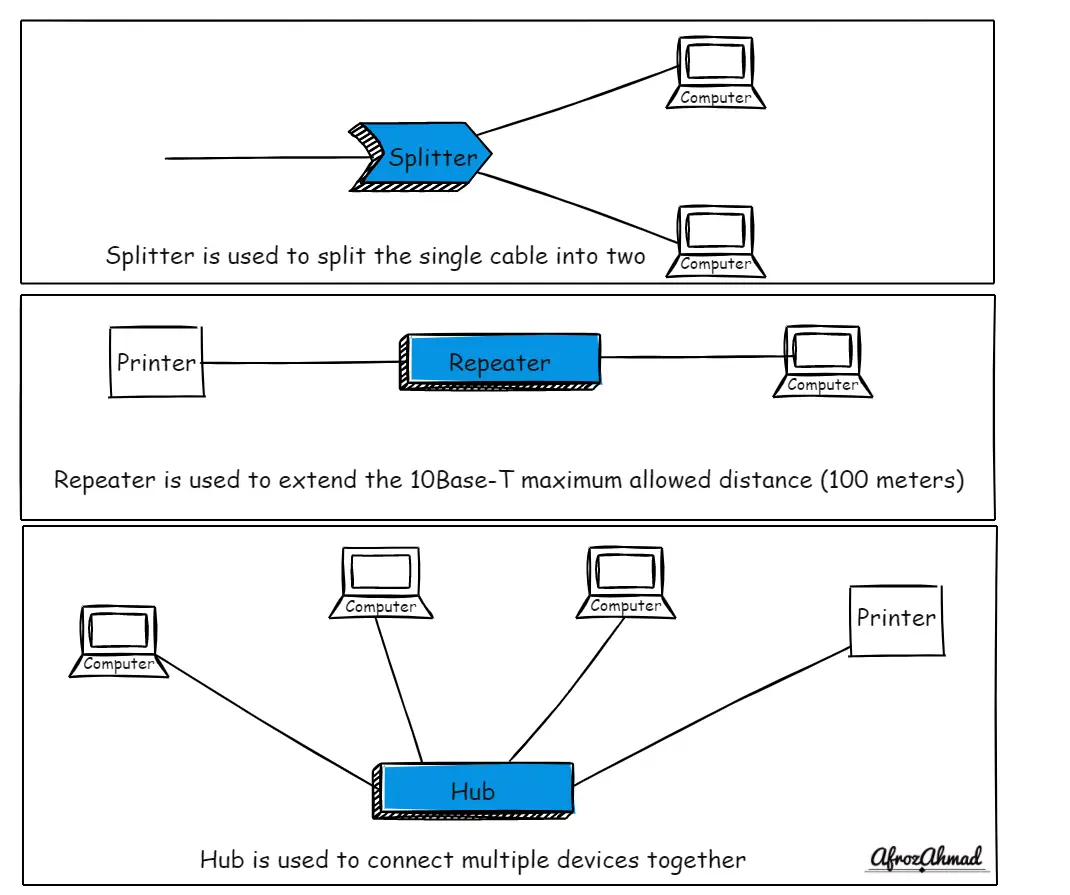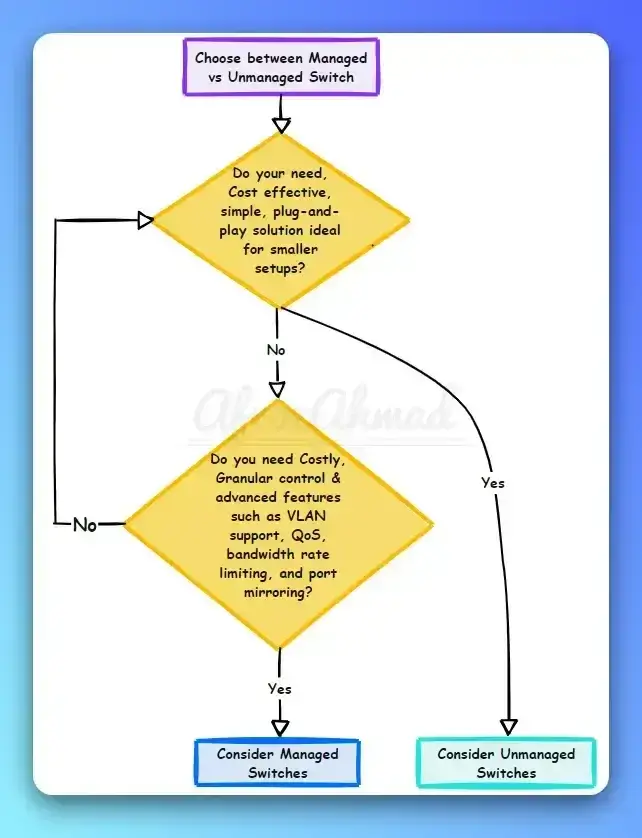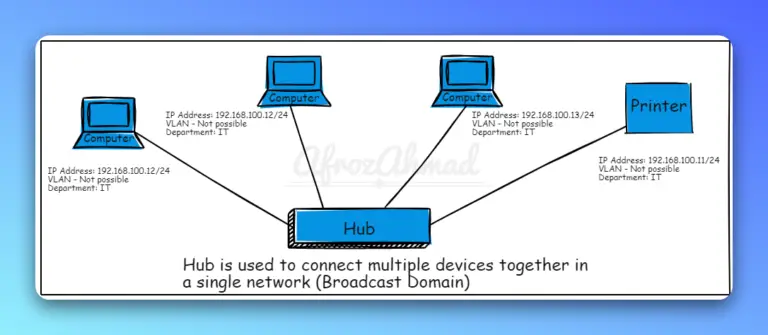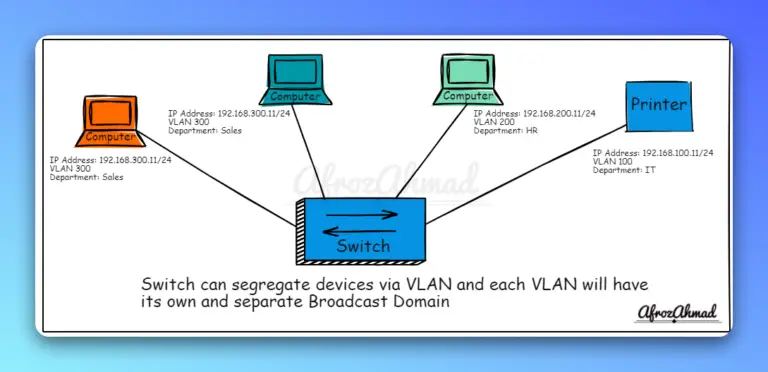In this article we will discuss Splitter vs Repeater vs Hub.
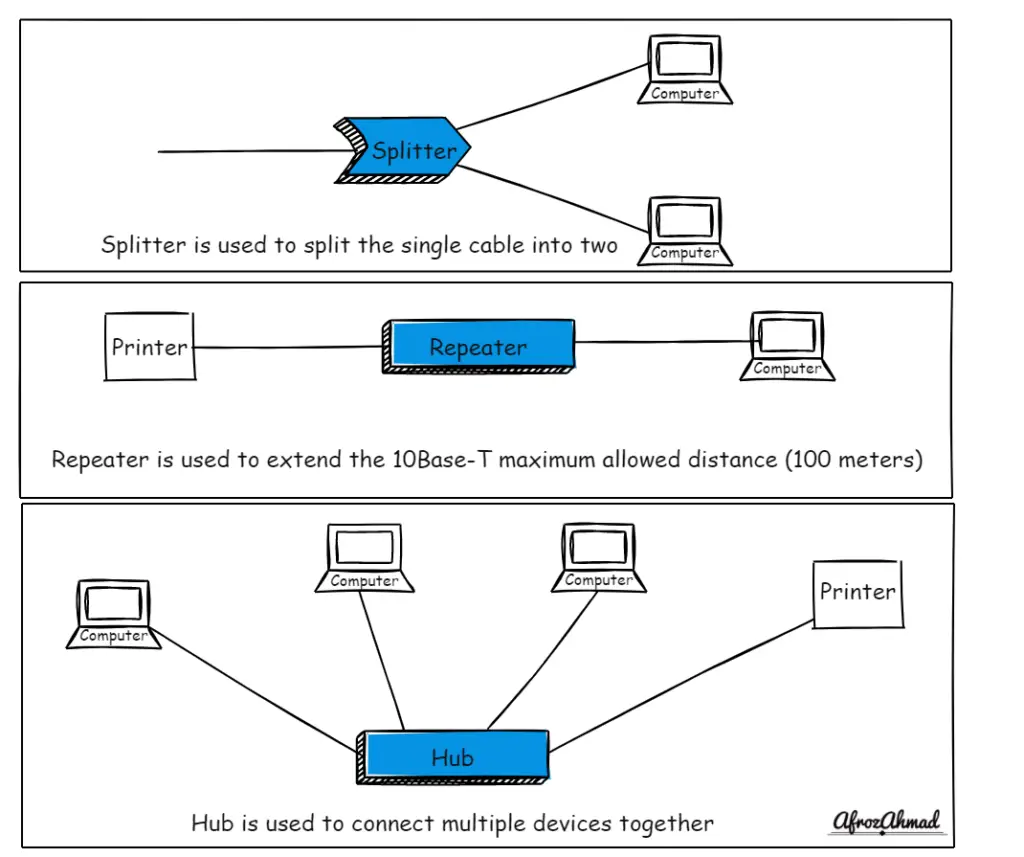
Splitter vs Repeater vs Hub
Here is a comparison table of Splitters, Repeaters, and Hubs:
| Feature | Splitter | Repeater | Hub |
|---|---|---|---|
| Function | Splits a single Ethernet connection into multiple ports | Extends the transmission distance of Ethernet signals | Connects multiple Ethernet devices together |
| OSI Layer | Physical | Physical | Physical |
| Intelligence | None, passive device | None, simply regenerates signals | None, broadcasts signals out all ports |
| Speed | Same as input | Same as input | Same as input |
| Duplex | Half | Half | Half |
| Forwarding Method | None, outputs to all ports | None, outputs to all ports | None, outputs to all ports |
| Collision Domain | Each port is separate | Single shared domain | Single shared domain |
| Common Uses | Connecting a small number of devices in close proximity | Extending cabling distances | Connecting multiple devices to create a LAN |
In summary:
- Splitters simply split a connection into multiple ports without any intelligence
- Repeaters regenerate signals to extend distances but do not filter or forward intelligently
- Hubs connect multiple devices but are prone to collisions due to broadcasting
Switches and routers have replaced hubs and repeaters in most modern networks due to their greater functionality.
What is a splitter?
When separating a network connection, Ethernet splitters are the most user-friendly solution. The gadget is a coaxial cable transmission system that divides a single cable into two.
Unlike hubs and switches, which require an external power source, a splitter is a passive device. In addition, they’re the most straightforward and most user-friendly to set up and utilize. Splitters are primarily used on a user desk or in a house where a single connection is coming, and you need to connect two devices. The optimum application for splitters in a home or business is to limit the number of long cables that you must run between rooms.
What is a repeater?
A repeater is a device that repeats a signal. Repeaters are typically used to extend a connection to a remote host or connect a group of users separated by a distance greater than the 10Base-T maximum distance limitation, 100 meters.
What is an ethernet Hub?
An ethernet hub is essentially a device with multiple ports that connects two or more Ethernet cables, allowing their signals to be repeated to every other port in a single network.
For this reason, hubs are sometimes referred to as repeaters; nevertheless, it is crucial to note that while a hub is a repeater, a repeater is not always considered a hub.
In other words, a hub is like a repeater, except that a repeater may only have two connectors, but a hub can have many more, and it repeats a signal over many cables instead of just one.
Checkout Ethernet Switch vs Hub vs Router article for more in depth comparison.
Conclusion
In this article we have looked into differences and similarity between hub vs splitter vs repeater.
- 10 Best Network Switches for Home Networks in 2026 (Top Picks) - December 24, 2025
- 7 Best Budget Routers For Small Business Networks (Under $200) - December 22, 2025
- How to Configure a Secure Site-to-Site VPN on Cisco Firepower Complete Guide - December 3, 2025

